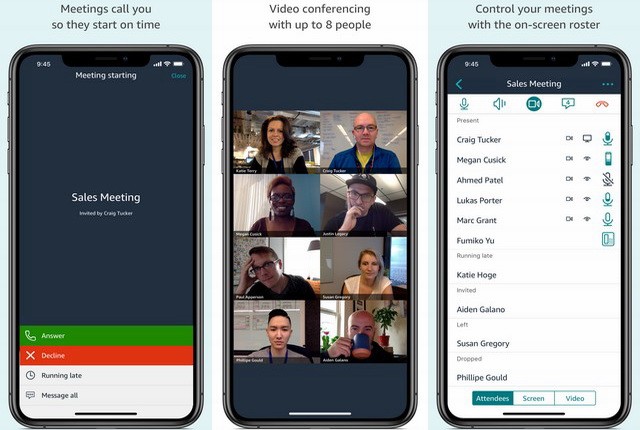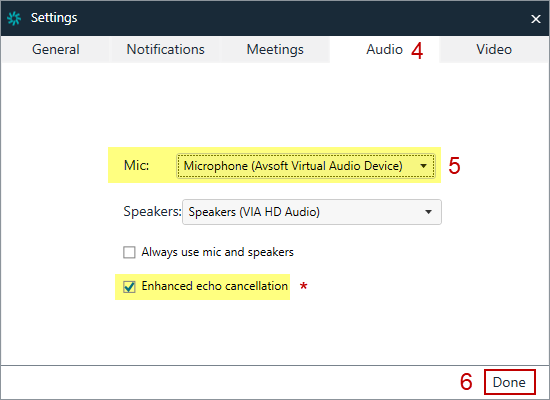
- #Calling using amazon chime update
- #Calling using amazon chime for android
- #Calling using amazon chime android
- #Calling using amazon chime code
Val observer = object : AudioVideoObserver. You can remove the observer by calling (observer). Note: To avoid missing any events, add an observer before the session starts. Add an observer to receive audio and video session life cycle events. Note: Even though there are more available stream options in Android, currently only STREAM_VOICE_CALL and STREAM_MUSIC are supported in Amazon Chime SDK for Android.
#Calling using amazon chime android
For more information, please refer to Android documentation: STREAM_VOICE_CALL, STREAM_MUSIC. If you don't know what it is, you probably don't need to worry about it. This configuration is for addressing the audio volume issue on Oculus Quest 2. The available options are VoiceCall and Music, they are equivalent of STREAM_VOICE_CALL and STREAM_MUSIC respectively in AudioManager. You can specify a non-default audio mode in AudioVideoConfiguration, and then start the meeting session.ĪudioStreamType: The default value is VoiceCall. Other supported audio formats include Mono/48KHz (Mono48K) or Mono/16KHz (Mono16K). There are 2 configurations available in audioVideoConfiguration:ĪudioMode: The default audio format is Stereo/48KHz i.e Stereo Audio with 48KHz sampling rate (Stereo48K). Start a session with default configurations: Make sure that the user has granted audio permission first. You need to start the meeting session to start sending and receiving audio. Please do not create a public GitHub issue. If you discover a potential security issue in this project we ask that you notify AWS/Amazon Security via our NOTE: use Reporting a suspected vulnerability With the URL of the serverless demo deployed in Step 1.
#Calling using amazon chime update
Update test_url in strings.xml at the path amazon-chime-sdk-android/app/src/main/res/values Unzip and copy the aar files to amazon-chime-sdk-android/amazon-chime-sdk/libs 3. Download binaryĭownload amazon-chime-sdk-media binary from the latest release.ĭownload amazon-chime-sdk-machine-learning binary for machine learning features. Deploy serverless demoĭeploy the serverless demo from amazon-chime-sdk-js, which returns We do not support x86 currently, so simulators with x86 will not work. NOTE: Please make sure that you are running on ARM supported devices (real devices) or simulator with arm supported. To run the demo application, follow these steps.
#Calling using amazon chime code
NOTE: This is just to run demo application and use SDK as code instead of aar library. TargetCompatibility JavaVersion.VERSION_1_8

SourceCompatibility JavaVersion.VERSION_1_8 Update adle in root/app and add the following under dependencies: To obtain the dependencies from Maven, add the dependencies to your app's (module-level) adle. aar files.įor the purpose of setup, your project's root folder will be referred to as root.
#Calling using amazon chime for android
The Mobile SDKs for Android could be downloaded from the Maven Central repository, by integrated into your Android project's Gradle files, or you can be directly embedded via. NOTE: If you just want to run demo application, skip to Running the demo app

Build video calling, audio calling, and screen sharing applications powered by Amazon Chime. Note: If building with the SDK source code, the development branch contains bleeding-edge changes that may not build with the publically available Chime media library or may not be as stable as public releases.


 0 kommentar(er)
0 kommentar(er)
